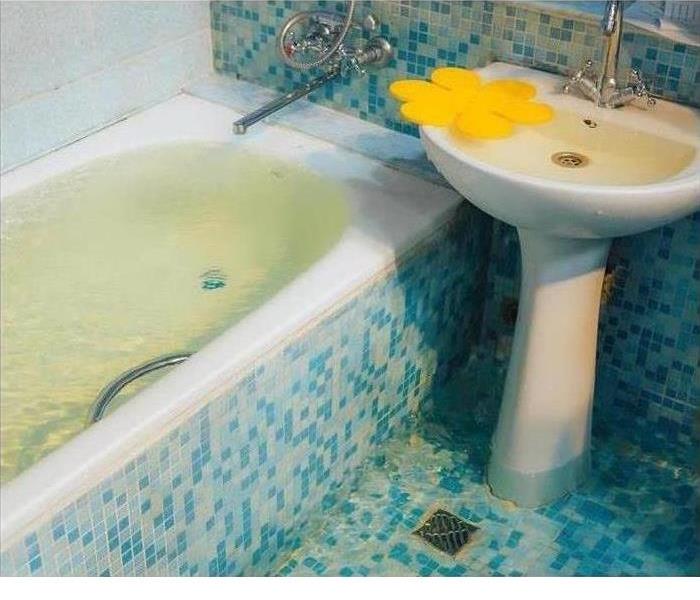5 Steps To Solve a Bathtub Sewage Backup Problem
6/25/2024 (Permalink)
Take These Five Steps as Sewage Starts Backing up Into a Bathtub
When contaminated water or solid waste backs up into a bathtub, homeowners need to resolve underlying plumbing problems before cleaning and restoring damage caused by a sewer backup.
1. Plug the Bathtub Drain
A drain plug can be helpful for keeping backups under control. Plugging the drain limits the amount of contaminated water that can flow back into a bathtub or overflows into a bathroom.
2. Clear the Sewer Line Blockage
Water will follow the path of least resistance and most tub fixtures are lower than bathroom sinks and toilets. Clearing blocked primary or secondary drains may resolve an issue. Depending on the severity of a clog and the availability of plumbing tools, a homeowner may need to call a professional.
3. Limit the Scope of Damage
Any measures a homeowner can take to contain contaminated water and solid waste can minimize sewer backup damage. Bathtubs are easy to disinfect, but porous materials and contents may need to be torn out, disposed of, and replaced.
4. Dispose of Contaminated Materials
It is important to get rid of absorbent materials that cannot be disinfected. Any materials contaminated by flooding that remain intact raise risks of mold damage and exposure.
5. Disinfect Nonporous Surfaces
A bathtub and most nonporous surfaces in a bathroom can safely be disinfected. Depending on the extent of sewer damage, a homeowner may clean up a backup into a bathtub or need to call professionals for a more comprehensive cleanup and restoration.
It is important to limit the spread of contaminated water and waste during a bathtub backup at a residence in Andice, TX. While most tubs are made of hard, non-porous materials, absorbent grout or drywall surrounding a bath may be difficult to completely clean and continue to pose re-contamination risks after a sewer backup.



 24/7 Emergency Service
24/7 Emergency Service
